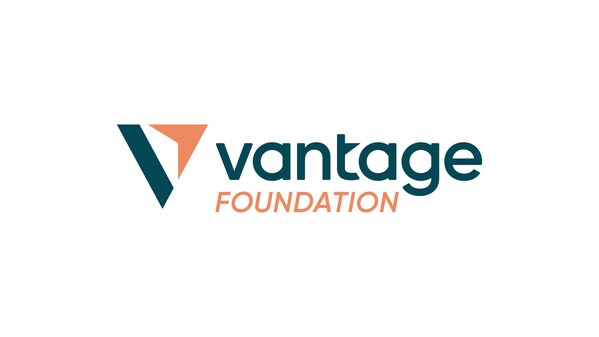
中東旅遊業與國際化進程
正在進行的國際化進程已導致許多經濟領域,特別是旅遊業的供應方發生重大變化。
儘管科學的話語正在努力跟上這些快速變化的步伐,但是在研究問題和風險以及與國際化進程有關的潛力和機遇方面,研究仍存在相當大的不足。本文著重於中東,特別是約旦哈希姆王國中小型旅遊企業(SMTE)的國際化進程,儘管存在重大政治和其他危機,該國仍然是西方人的旅遊勝地。 SMTE的國際化是一個複雜的過程,需要對這種現象進行更全面的研究。因此,本文將嘗試從以問題為中心的角度研究約旦的國際化進程,並根據約旦旅遊業的主要參與者的評論進行批判性地研究和討論。由此獲得的見識應有助於減少國際化進程研究中仍然存在的理論缺陷。特別是,必須在嚴格的評估中包括“阿拉伯之春”對約旦旅遊市場的影響。版權所有©2013 John Wiley&Sons,Ltd.
Ongoing internationalization processes have resulted in significant changes on the supply side in many fields of the economy and specifically in tourism. Although the scientific discourse is working hard to keep pace with these rapid changes, there is nevertheless a considerable deficit in research on the problems and risks as well as the potential and opportunities associated with intensifying processes of internationalization. This paper focuses on the internationalization process of small and medium‐sized tourism enterprises (SMTEs) in the Middle East, specifically in the Hashemite Kingdom of Jordan, which continues to be a tourist destination for Westerners in spite of major political and other crises. Internationalization of SMTEs is a complex process, and studies that take a more holistic view of this phenomenon are needed. This paper will therefore attempt to investigate the internationalization process in Jordan from a problem‐centred perspective and to critically examine and discuss it on the basis of comments made by leading actors in the Jordanian tourism business. The thus gained insights should help to reduce the still existing theoretical deficits in the study of the internationalization process. Particularly, the impact of the Arab Spring on the Jordanian tourism market must be included in a critical assessment. Copyright © 2013 John Wiley & Sons, Ltd.

旅遊和國際化
正在進行的國際化進程已導致旅遊業供應方面的重大變化,就像其他行業一樣。學術論述試圖跟上變化的步伐,但儘管如此,在與問題和風險以及與國際化加劇相關的旅遊業的機遇和潛力的研究中仍然存在很大的缺陷(Ateljevic和Doorne,2000年)。關於國際化的大量傳統文獻仍然主要集中在製造業,不能直接應用於旅遊業。迄今為止,明顯缺乏二手文獻和可靠的經驗數據往往限制了這一領域的研究(Castellacci,2008; Carlsson,2006)。這對於近東和中東尤其如此,近東和中東仍然是西方國家遊客最喜歡的目的地之一,其旅遊業務受到該地區政治事件發生的變化的極大影響(Daher,2007年)。儘管如此,儘管作為目的地的國際重要性日益提高(UNWTO,2012),但該地區仍經常被科學界所忽視。自從阿拉伯之春爆發以來,這種忽視就加劇了,導致需求顯著下降(Al-Hamarneh,2013年)。本文的具體例子將是約旦哈希姆王國,該國旅遊業經歷了幾十年的發展之後,近年來旅遊業在國際上取得了強勁的發展,其中國內旅遊業發揮了最重要的作用(貝里安,1992;科爾斯和謝爾,2006;皮爾馬耶和Scherle,2012年)。在約旦,旅遊業仍是一種相對較新的現象。只有與以色列簽署和平條約之後,西方人才會考慮發展旅遊業。特別是,約旦的地緣戰略位置位於諸如以色列,伊拉克和最近的敘利亞等各種麻煩地區之間,其多樣化的優質旅遊產品使其成為一個非常有趣的研究領域(Gray,2002年)。
Ongoing internationalization processes have led to considerable changes on the supply side in tourism, like in other industries. The academic discourse attempts to keep pace with the changes, but nevertheless, a large deficit remains in research on the problems and risks and also the opportunities and potentials for tourism businesses associated with intensified internationalization (Ateljevic and Doorne, 2000). A great deal of the conventional literature on internationalization still concentrates primarily on the manufacturing sector and cannot be applied directly to the tourism sector. So far, the conspicuous lack of secondary literature and reliable empirical data has tended to limit research in this area (Castellacci, 2008; Carlsson, 2006). This holds particularly for the Near and Middle East, which continue to be among the most popular destinations for tourists from Western countries and whose tourism businesses are highly affected by the changes occurring in connection with the political events in the region (Daher, 2007). Nevertheless, despite its increasing international significance as a destination (UNWTO, 2012), the region is still often neglected by the scientific community. This neglect has intensified since the onset of the Arab Spring, which has led to a noticeable drop in demand (Al‐Hamarneh, 2013). The concrete example for this paper will be the Hashemite Kingdom of Jordan, where the tourism industry has experienced a strong international expansion in recent years after decades in which domestic tourism played the most important role (Berriane, 1992; Coles and Scherle, 2006; Pillmayer and Scherle, 2012). Tourism is still a relatively recent phenomenon in Jordan. Only after the signing of the peace treaty with Israel was it possible for a tourism sector that Westerners would consider professional to develop. In particular, Jordan’s geostrategic location between various trouble spots such as Israel, Iraq and recently, Syria and its diversified range of outstanding tourist products make it a very interesting research area (Gray, 2002).

本文對約旦中小型旅遊企業的國際化進程進行了調查。在這種情況下,國際化被認為是一種過程性現象,與相關行為者面臨的問題和挑戰的質的增加有關(Coles等,2009)。對於公司而言,走向國際通常是一個複雜的過程,它是從傳統的國家商業活動中發展而來的。在過去幾年中,公司部分地受到國際競爭的加劇和需求模式變化的驅動,部分地被融合市場所提供的機會所吸引,因此公司已經發展並採用了多種類型的國際參與。這包括非合同關係(例如鬆散協議,合同關係或許可)到股權參與(例如交叉投資或持股)(Oviatt和McDougall,2005年)。
特別是在旅遊業中,商務活動的國際化可以看作是公司企業家身份的關鍵時刻,因為在許多方面,旅遊業都體現了卓越的國際化。因此,不僅供應和需求在最大程度上實現了國際化,而且所提供的服務本身越來越基於克服邊界的問題(在這裡,運輸和通信領域的創新技術起著至關重要的作用,因為它們會導致空間和時間縮小)。然而,關於國際化或市場進入戰略的學術論述仍處於起步階段。本文將介紹主要的國際化理論。然後,它將介紹定性研究的經驗結果,這應提供對所調查的約旦旅遊企業的實際國際化實踐的見識。
This paper presents an investigation of the internationalization processes of small‐sized and medium‐sized tourism enterprises in Jordan. In this context, internationalization is understood to be a processual phenomenon that is associated with a qualitative increase in issues and challenges facing the relevant actors (Coles et al., 2009). Going international is usually a complex process for companies, one that develops out of traditional national business activities. Partially driven by the intensification of international competition and changes in demand patterns, partially attracted by the opportunities afforded by converging markets, companies have developed and employed numerous types of international engagement in the past years. These reach from non‐contractual connections, such as loose agreements, over contractual ties or licences, to equity participation, such as cross‐investments or holdings (Oviatt and McDougall, 2005).
Particularly in the tourism industry, the internationalization of business activities can be viewed as a constitutive moment in the entrepreneurial identity of a company because in many respects, tourism embodies internationalization par excellence. Hence, not only supply and demand are internationalized to the greatest possible extent, but the services provided are per se increasingly based on the overcoming of boundaries (here, innovative technologies in transport and communication play an essential role because they cause space and time to shrink). Nevertheless, the academic discourse on strategies for internationalization or market entry is still in its infancy. This paper will introduce the main internationalization theories. It will then present the empirical results of a qualitative study, which should provide insights into the actual internationalization practices of the investigated Jordanian tourism enterprises.

為了更好地了解國際化過程,本文將首先闡明當前的研究狀況。在此,本文將特別關注特定企業的國際化目標。然後,將介紹主要的國際化理論,並在此背景下,將解釋本文采用的方法。在方法部分,作者將描述該項目中最重要的調查目標和研究工具。隨後的經驗部分將使讀者熟悉約旦中小型旅遊企業的國際化狀況。然後,由此獲得的信息將被置於總體環境中,並進行嚴格評估。最後一部分將總結主要發現,並強調需要國際化過程模型的必要性。
本文正是針對這一缺陷。它明確地側重於供應方。重點放在供應方的兩個主要參與者,旅館和入境代理的國際化過程中,它們是旅遊產品次要範圍的基本組成部分。與其他旅遊業研究不同,後者涉及供應方的國際化進程(特別是Lessmeister,2008年; Mosedale,2007年; Scherle,2006年),並且其科學興趣僅集中於新進旅行社,而該研究還包括旅館。造成這種情況的一個主要原因是,在約旦,大多數新進旅行社同時充當酒店經營者,因此兩種類型的旅遊企業之間有著很強的相互依賴性(Abu Aliqah和Al-Rfou,2010年)。同樣,與剛剛提到的研究相反,重點不在運營的國際化而是市場的國際化,因為科學界對這一主題的關注相對較少(Freeman和Sandwell,2008年)。這種方法的另一個動機與所謂的“阿拉伯之春”的後果有關,這導致了許多最重要的歐洲貨源市場的需求急劇下降(UNWTO,2012)。這不可避免地意味著約旦企業家必須開拓新的國際貨源市場,以試圖至少部分地彌補需求的下降(Al-Hamarneh,2013年)。
在這一點上,應該提出三個評論,這些評論對於本研究背後的哲學至關重要。首先,不包括一種特定的國際化形式,即外國直接投資。其原因是,1995年約旦投資委員會(Jordan Investment Board)的所謂的《投資促進法》(2000)繼續嚴格限制投資者在事務和決策權方面的發言權(Jordan Investment Board,2000)。其次,關於國際化的大量傳統文獻仍主要集中在製造業,並且其在旅遊業等服務領域的適用性有限(Clancy,1998; Greenley和Matcham,2007)。特別是,明顯缺乏二手文獻和可靠的統計數據意味著在該研究項目中,採用了明顯的定性方法。
To better contextualize the internationalization process, the paper will first shed light on the current state of research. Here, the paper will pay particular attention to the internationalization goals of specific businesses. Then, the main internationalization theories will be presented, and in this context, the approach employed in this paper will be explained. In the methods section, the authors will describe the most important survey objectives and the research tools used in this project. The subsequent empirical section will familiarize the reader with the state of internationalization of small‐sized and medium‐sized tourism enterprises in Jordan. Then, the thus gained information will be placed into an overarching context and subjected to a critical assessment. The final section will summarize the principal findings and highlight the need for a model of internationalization processes.
International tourism has attracted more public attention than most other industries. One of the most important reasons for this is that tourism is a leading sector in many economies (McKercher and Lew, 2005; Meethan, 2001), and the numbers speak for themselves. To mention only one example, the receipts from the tourism industry worldwide are estimated at $US1,030 billion in 2011, compared with $US928 billion in 2010 (+3.9%). International arrivals rose by 4.6% from 940 million in 2010 to 983 million (UNWTO, 2012). However, it would be much too one‐sided to reduce the phenomenon of tourism exclusively to economic indicators. As Hall et al. (2005: 3) pointed out: ‘At the very beginning of the twenty‐first century, tourism as an industry had probably achieved a higher profile in the public consciousness of the developed world than ever before. There has, of course, been a steady growth in the number of tourists over several decades, but the critical reasons were the impacts on international tourism (1) the terrorist attacks of September 11 2001, (2) the American‐led invasion of Iraq, (3) airline financial failures, and (4) government and traveller responses to the SARS virus. Destinations and tourism‐related businesses around the world experienced a profound shift in consumer confidence and travel behaviour. Arguably, these impacts, and their subsequent media reporting, gave the tourism industry an unprecedented high‐policy profile as government and governance at all levels wrestled with travel and security issues, and resultant shifts in the economic and employment impacts of tourism’.
Irrespective of the complexity of the phenomenon, which has increased considerably with advancing globalization, tourism research in the past tended to devote itself to aspects on the demand side. In comparison, definitely less attention was paid to the supply side, as relevant assessments attest (Fletcher, 2008; Greenley and Matcham, 2007; Moskowitz, 2008; Turunen, 2009). It is undisputed that in the international scientific community, there is still a considerable deficit in research on internationalization and tourism, when we consider the detailed research on incoming tourism. Debbage and Ioannides (2005: 99), for instance, point out this fact in their paper ‘The Cultural Turn? Toward a More Critical Economic Geography of Tourism’: ‘The study of tourism has been handicapped by inattention of the supply side, and we long argued that comprehending tourism requires improved understanding of how the tourism production system manipulates and shapes tourist places and destinations’.
This paper addresses precisely this deficit. It focuses explicitly on the supply side. The emphasis lies on the internationalization processes of two of the chief actors on the supply side, hotels and incoming agencies, they being fundamental components of the secondary range of tourism products. In contrast to other tourism studies, which dealt with the internationalization processes on the supply side (in particular Lessmeister, 2008; Mosedale, 2007; Scherle, 2006) and whose scientific interest lay exclusively on incoming agencies, this study also included hotels. One main reason for this was that in Jordan, most incoming agencies simultaneously serve as hotel operators so that there is a strong interdependence between the two types of tourism enterprise (Abu Aliqah and Al‐Rfou, 2010). Likewise, in contrast to the just mentioned studies, the focus was not on the internationalization of operations but on the internationalization of markets because the scientific community has devoted relatively little attention to this topic (Freeman and Sandwell, 2008). A further motive for this approach was related to the aftermath of the so‐called Arab Spring, which caused the demand to drop precipitously in many of the most important European source markets (UNWTO, 2012). This inevitably meant that the Jordanian entrepreneurs had to tap new international source markets in an attempt to at least partially compensate for the drop in demand (Al‐Hamarneh, 2013).
At this point, three comments should be made that are of crucial importance for the philosophy behind this study. First, one specific kind of internationalization, namely, foreign direct investment, is not included. The reason for this is that the so‐called Investment Promotion Law of the Jordan Investment Board of 1995 (2000) continues to set strict limits to investors’ say in affairs and decision‐making powers (Jordan Investment Board, 2000). Second, a great deal of the conventional literature on internationalization still concentrates primarily on the manufacturing sector, and its applicability to a service sector like tourism is limited (Clancy, 1998; Greenley and Matcham, 2007). In particular, the conspicuous lack of secondary literature and reliable statistics meant that in this research project, a distinctly qualitative approach was applied.

最後但並非不重要的一點是,應該指出研究的跨文化方面。這對於被調查的主題和研究項目的設計都至關重要。對於研究的主題,即即將到來的代理商和旅館,跨文化活動總是在文化重疊的情況下進行。在此過程中,他們以習慣性的,在文化上留下的烙印的行為,心態和情感,與受到異國文化影響的伙伴見面。跨文化活動始終嵌入到由決定因素“文化差異”(由不同的取向系統引起),“個體差異”(由人格特質和生活史引起)和現有的“跨文化知識和經驗”決定因素的三角關係中(馬丁,2004年;托馬斯和哈格曼,1996年)。正如Coles和Scherle(2006)以及Morrison和Teixeira(2004)的論文所證明的那樣,這無疑要求研究對象發展跨文化能力。此外,研究人員必須時刻牢記,大多數理論方法都是西方啟發性的,絕不能直接應用於該研究領域,除了在這種情況下,對國際化的元敘事或解釋是毫無疑問。
Last but not least, the intercultural dimension of the study should be pointed out. It is of crucial relevance for both the investigated subject and the design of the research project. For the subjects of the study, i.e. the incoming agencies and hotels, intercultural activities always take place in a situation of overlapping cultures. In the process, they, with their accustomed, culturally imprinted behaviour, mentalities and emotions, meet up with partners who are influenced by a foreign culture. Intercultural activity is always embedded into a triangle of forces composed of the determinants ‘cultural differences’ (caused by different orientation systems), ‘individual differences’ (caused by personality traits and life history) and the existing ‘intercultural knowledge and experience’ (Leclerc and Martin, 2004; Thomas and Hagemann, 1996). This definitely requires the study subjects to develop intercultural competence, as demonstrated by such papers as those by Coles and Scherle (2006) and Morrison and Teixeira (2004). Moreover, a researcher must constantly bear in mind that most theoretical approaches are western inspired and can by no means be applied directly to this research area, quite apart from the fact that in this context, a meta‐narrative or strand of explanation of internationalization is out of the question.

文/ Prof. Markus Pillmayer
圖/Website Resource























